
Blog
History of Lederhosen: From Workwear to Bavarian Icon
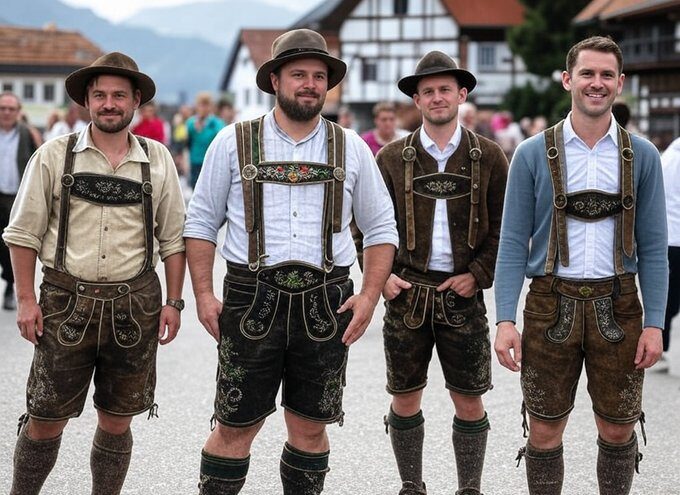
History of Lederhosen
Lederhosen, translating to “leather trousers” in German, are emblematic of Bavarian and Alpine heritage. These durable leather breeches, traditionally worn by men, have transcended their utilitarian origins to become symbols of cultural pride and festivity. Rooted deeply in the traditions of Southern Germany and Austria, lederhosen are now globally recognized, especially during Oktoberfest celebrations. This blog delves into the rich history, evolution, and contemporary significance of lederhosen, tracing their journey from functional attire to iconic cultural emblem.

Origins of Lederhosen
Pre-18th Century: Functional Workwear
The inception of lederhosen dates back to the early 18th century, rooted in the rugged landscapes of Bavaria and Austria. Designed for practicality, these short leather breeches were favored by peasants, hunters, and laborers for their durability and ease of movement. Crafted from sturdy materials like deer or goat leather, lederhosen provided protection against harsh weather and terrain, making them indispensable for daily work in the Alpine regions. Their functional design, including features like suspenders and drop-front flaps, catered to the needs of the working class, emphasizing utility over aesthetics.
How Should Lederhosen Fit Properly
Influence of French Culottes
In the 18th century, French aristocratic fashion introduced culottes—knee-breeches that influenced European attire. Alpine communities adapted this style, integrating it with their traditional leather garments. The result was a fusion of fashion and function, leading to the distinctive lederhosen design. This adaptation showcased the region’s ability to blend external influences with local traditions, creating a unique cultural artifact.
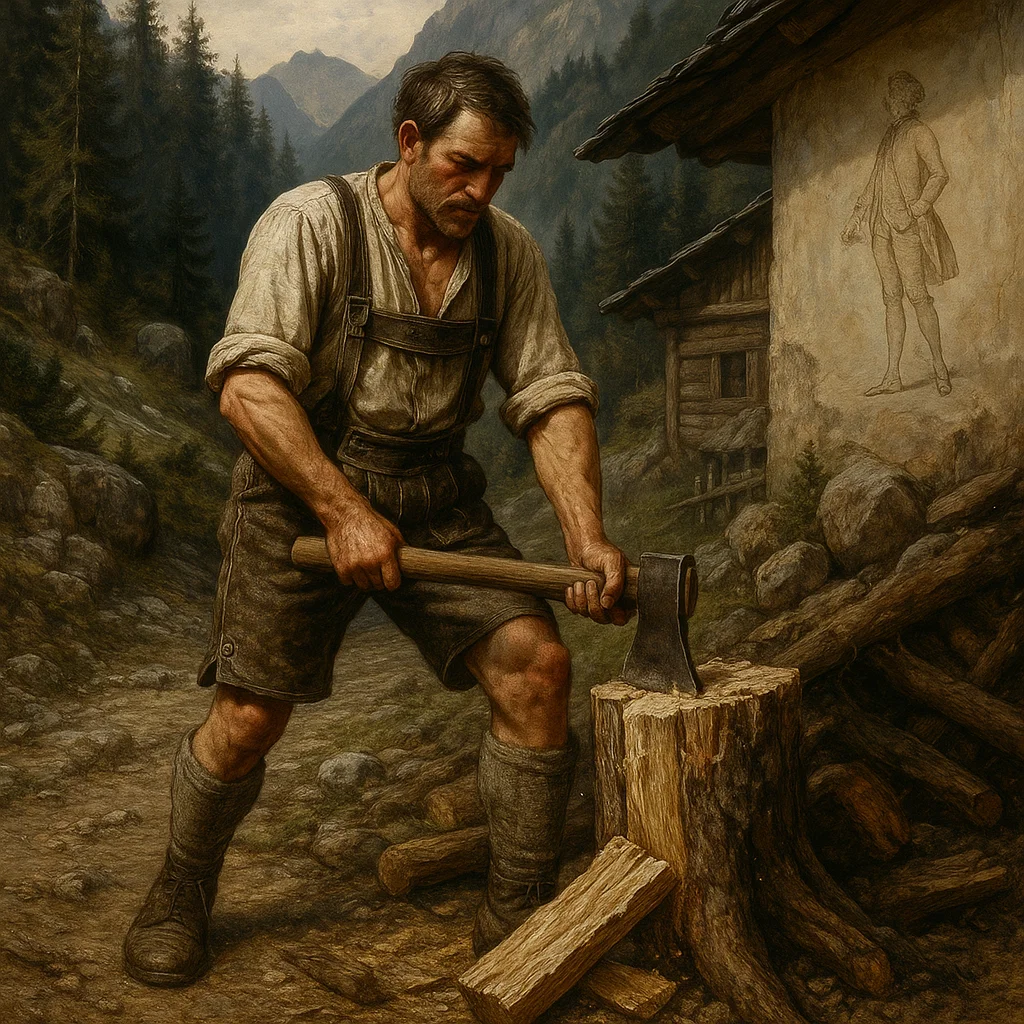
Lederhosen in the 18th and 19th Centuries
Rise in Popularity Among Rural Communities
During the 18th and 19th centuries, lederhosen became a staple among rural men in Bavaria and Austria. Their association with strength, masculinity, and resilience made them popular among working-class communities. The trousers symbolized a connection to the land and traditional values, reinforcing their cultural significance. Lederhosen were not just practical attire but also a statement of identity and pride.
Decline in Use During Industrialization
The advent of industrialization brought significant societal shifts, including urbanization and the rise of modern clothing styles. As people moved to cities and adopted new fashions, the everyday use of lederhosen declined. They became associated with rural life and were often viewed as outdated in urban settings. This period marked a transition where traditional garments like lederhosen faced challenges in maintaining their place in a rapidly modernizing society.
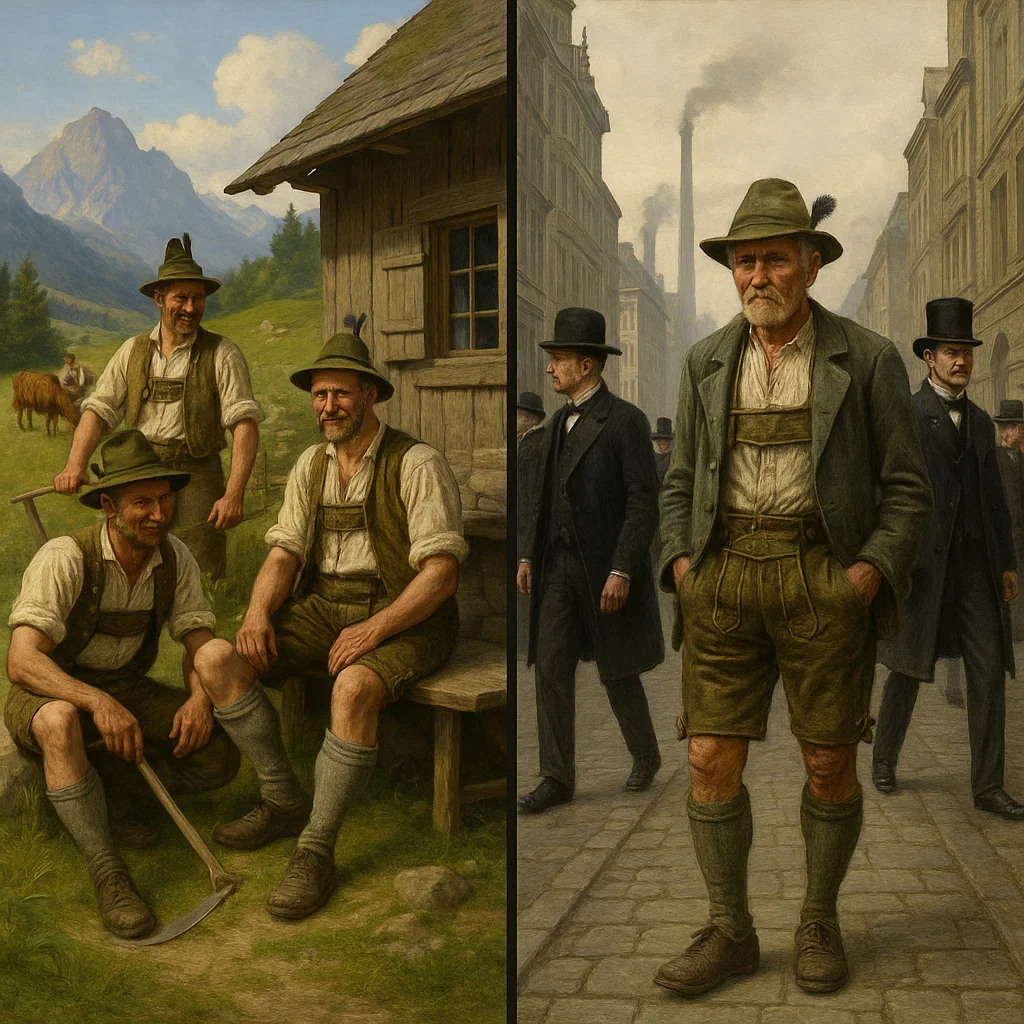
Lederhosen Revival in the Early 20th Century
Cultural Preservation Efforts
As the world moved quickly into the modern age in the early 1900s, many people in Bavaria and the Alpine regions began to worry that their traditional way of life might be forgotten. This included the rich heritage of folk music, dances, and especially traditional clothing like lederhosen. To protect these cultural treasures, local groups known as Trachtenvereine—folklore or costume preservation societies—began to form. These societies were made up of proud locals who wanted to keep their customs alive for future generations.
One of their main goals was to bring back traditional clothing that had started to disappear due to industrialization and the growing influence of modern fashion. Lederhosen, once everyday wear for rural workers, were now worn less often and risked becoming outdated. But the Trachtenvereine helped change that. By organizing cultural festivals, parades, and events where traditional dress was encouraged or even required, they brought lederhosen back into the spotlight.
Wearing lederhosen at these events became a way to show pride in one’s Bavarian roots. Over time, this movement successfully turned lederhosen into a symbol of cultural identity and national pride, especially in southern Germany. What was once seen as simple workwear was now being recognized as an important part of Bavarian heritage.
What to Wear with Lederhosen
Oktoberfest and the Tourism Boom
While local societies worked to preserve tradition, another major factor helped catapult lederhosen into the global spotlight: Oktoberfest. Held every year in Munich, this famous beer festival is now known worldwide, but its role in reviving and popularizing lederhosen is often overlooked.
In the early 20th century, Oktoberfest began attracting not only local Bavarians but also visitors from across Germany and beyond. As the event grew, people started to see it as more than just a beer festival—it became a celebration of Bavarian life. Wearing traditional clothing like lederhosen and dirndls quickly became part of the experience, both for locals and curious tourists.
Over time, lederhosen became so closely linked with Oktoberfest that they turned into a visual symbol of Bavarian culture. Photos of people enjoying beer in leather trousers spread across newspapers, postcards, and eventually the internet, helping the outfit gain popularity far beyond Germany. Tourists wanted to “dress the part” when attending Oktoberfest, and that meant buying or renting their own pair of lederhosen.
This surge in popularity helped breathe new life into the tradition. What started as a local preservation effort was now a global cultural phenomenon. Lederhosen were no longer just for Bavarians—they had become a universal way to connect with a vibrant and proud culture.
Lederhosen in Modern Times
Symbol of Bavarian Pride
In today’s world, lederhosen have evolved far beyond their humble beginnings as workwear for rural communities. They are now worn with pride at festivals, weddings, and other traditional Bavarian events, serving as powerful symbols of cultural pride. Every time someone dons a pair of lederhosen, they’re not just wearing a piece of clothing; they’re expressing a deep connection to Bavaria’s long history and rich traditions.
The modern versions of lederhosen maintain the timeless elements that made them special. For example, newer designs might feature a more tailored fit or come in a wider range of colors, providing wearers with options that are stylish yet still rooted in tradition.
What makes lederhosen even more significant today is how they act as tangible links to the past. By wearing these garments, Bavarians are not just celebrating their cultural heritage—they are also proudly keeping it alive for future generations. Whether it’s a formal event like a wedding or a lively festival like Oktoberfest, lederhosen remain an essential part of the Bavarian identity. Their continued popularity reinforces their deep importance within the region, and shows that tradition can coexist with modern life, thriving in both old and new contexts.
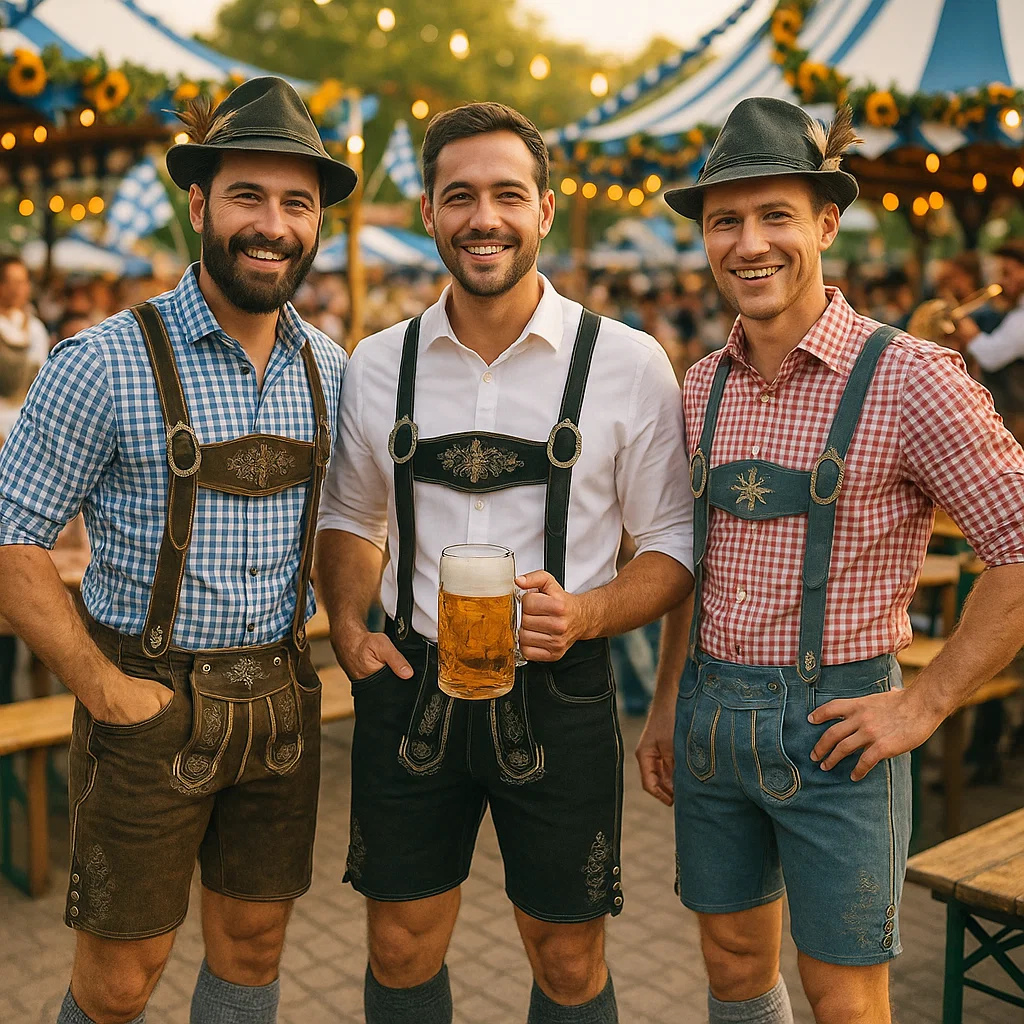
Lederhosen in Pop Culture
Lederhosen’s influence extends well beyond the fields and festivals of Bavaria. In recent decades, they’ve found their way into global pop culture—appearing in movies, TV shows, advertisements, and even music videos. When film directors want to showcase something distinctly German or Bavarian, they often turn to lederhosen. These iconic trousers can instantly evoke the spirit of German culture, adding authenticity to a scene and helping to transport audiences into a festive, traditional setting.
While the portrayal of lederhosen in pop culture can sometimes lean into stereotypes—such as the overemphasis on beer-drinking or “yodeling” images—they also play an important role in creating global recognition for German customs. Whether in a major Hollywood film or a viral commercial, the appearance of lederhosen reminds people of the traditions of Bavaria, piquing interest and curiosity about the culture behind them.
Materials and Craftsmanship
Traditional Leather Sources
Authentic lederhosen are crafted from high-quality leathers such as deer, goat, or pigskin. Each type offers distinct characteristics: deerskin is soft and durable, goatskin is lightweight and supple, while pigskin is robust and economical. The choice of leather affects the garment’s comfort, appearance, and longevity, reflecting the wearer’s preferences and the intended use. Traditional tanning and preparation methods ensure that the leather maintains its quality over time.
Embroidery and Personalization
Embroidery is a hallmark of lederhosen, with patterns often indicating regional origins or family heritage. Motifs range from simple designs to intricate artworks, showcasing the craftsmanship involved. Personalized embroidery adds uniqueness, turning each pair into a wearable heirloom. These decorative elements not only enhance aesthetic appeal but also convey cultural narratives, connecting the wearer to their roots.
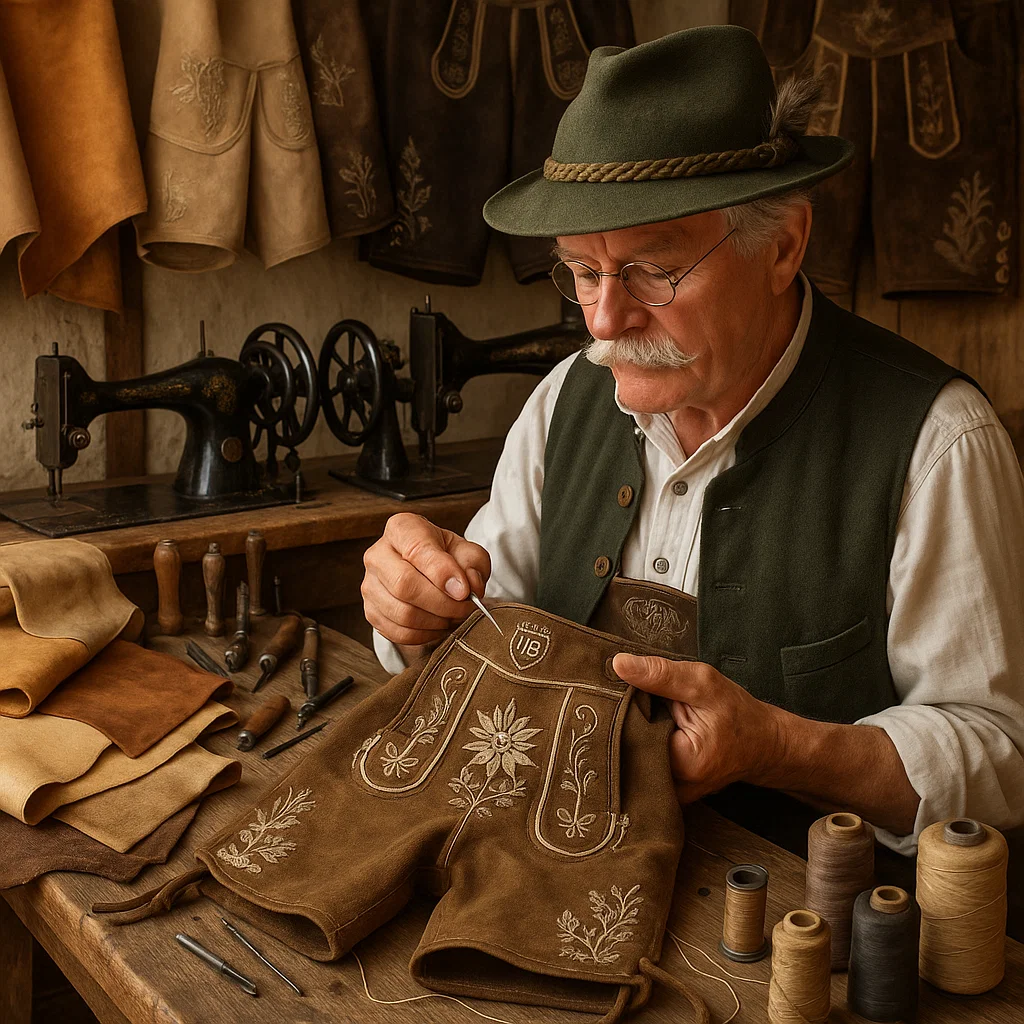
Lederhosen vs. Bundhosen
While both are traditional leather trousers, lederhosen and bundhosen differ primarily in length and usage:
- Lederhosen: Typically short, ending above the knee, suitable for active wear and warmer climates.
- Bundhosen: Longer, extending below the knee, often worn in cooler weather or for formal occasions.
The choice between the two depends on regional customs, event formality, and personal preference. Both styles maintain traditional craftsmanship and cultural significance.
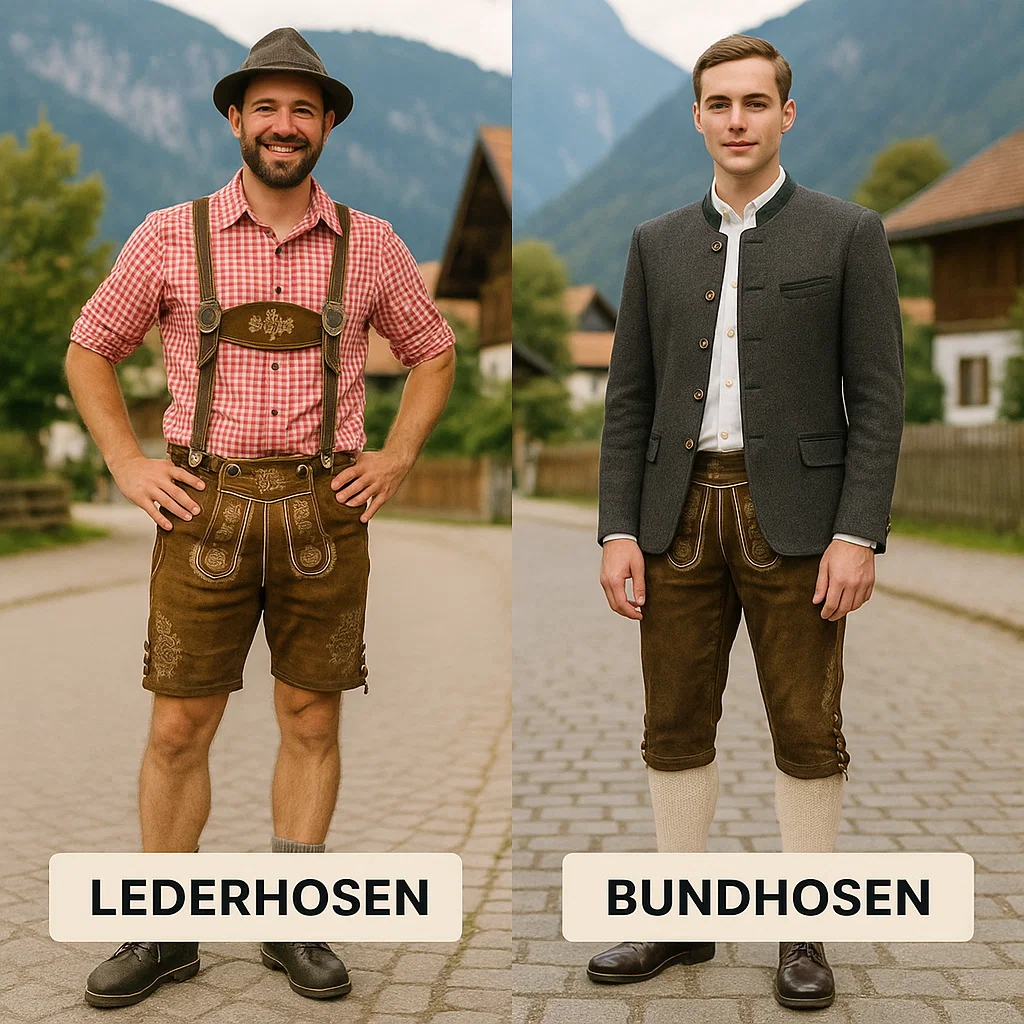
Women and Lederhosen
Traditionally, women wore dirndls, but modern fashion has embraced lederhosen for women, offering a blend of tradition and contemporary style. These adaptations often feature tailored fits, varied colors, and decorative elements appealing to female aesthetics. The trend reflects evolving gender roles and the desire for inclusive cultural expression. Women now confidently wear lederhosen at festivals, showcasing both heritage and individuality.
Global Spread and Adaptation
Lederhosen have transcended their regional origins, gaining popularity worldwide, particularly during Oktoberfest celebrations. Cities across the globe host their versions of the festival, where attendees don traditional attire to embrace Bavarian culture. This global adaptation has led to variations in design and usage, blending local influences with traditional elements. The international appeal of lederhosen underscores their status as cultural ambassadors, promoting appreciation for German heritage.
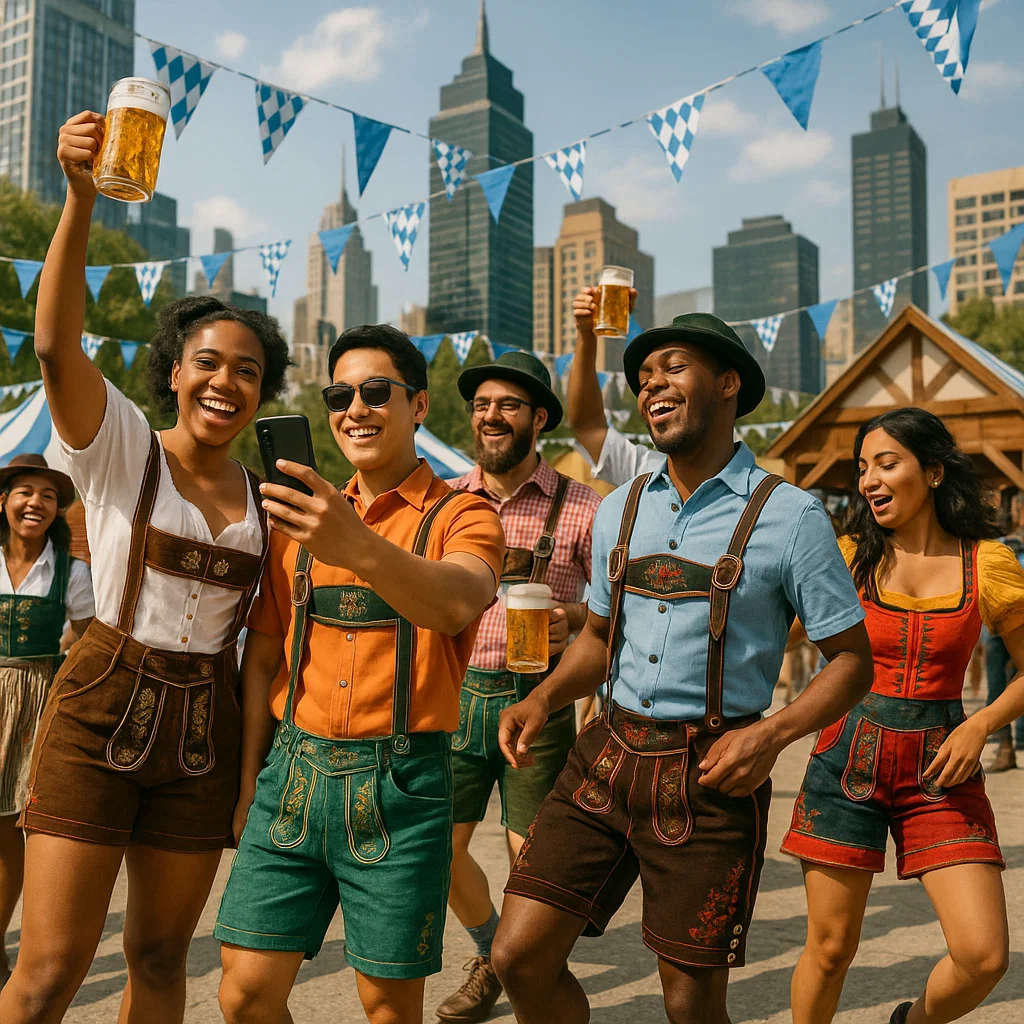
FAQ’S
What is a fun fact about lederhosen?
A fun fact about lederhosen is that the embroidery on these traditional leather pants often signified the wearer’s region or town, giving each pair a unique connection to local pride. In small villages, men would often own multiple pairs of lederhosen—one for everyday work and another specifically for festive occasions like weddings. This made lederhosen not just a functional garment, but also a meaningful part of cultural heritage and community identity.
What does black lederhosen mean?
Black lederhosen symbolizes a modern twist on traditional Bavarian attire, offering a sleek, sophisticated look that exudes confidence and power. Typically associated with festive occasions such as Oktoberfest, black lederhosen represents a more contemporary and fashionable interpretation of the classic style. The choice of black as a color gives the outfit a sense of elegance while maintaining the cultural heritage of the garment. It stands as a bold, refined option for those looking to make a statement while participating in traditional celebrations. Black lederhosen blends tradition with modernity, making it a versatile and stylish choice for festive events.
What country uses lederhosen?
Lederhosen are traditionally worn in Germany, specifically in Bavaria, but they are not exclusive to this region. Other Alpine countries also have a strong tradition of wearing Lederhosen, including Austria, Switzerland, and South Tyrol (an autonomous region in Italy). The term “Krachledernen” is also used in some areas, indicating the widespread presence of this distinctive garment among various Alpine peoples. Therefore, Lederhosen are a cultural attire in multiple countries across the Alpine region, including Germany, Austria, Switzerland, and parts of Italy.
Why are lederhosen so expensive?
Lederhosen are expensive primarily because they are made from high-quality leather, a naturally costly and durable material. The most premium versions use deerskin, which is highly valued for its softness, strength, and luxurious texture. Authentic lederhosen are not mass-produced but rather handcrafted, reflecting a level of craftsmanship that adds to their price. These garments are deeply rooted in Bavarian culture, often considered traditional attire that carries heritage and symbolic value. The combination of fine materials, detailed embroidery, and artisanal construction makes authentic lederhosen not only a piece of clothing but also a cultural investment—one that’s built to last for generations.

Anna Bauer is a seasoned Bavarian fashion expert, cultural consultant, and heritage stylist with over a decade of hands-on experience in traditional German clothing. Born in Munich, the heart of Bavaria, Anna grew up surrounded by the rich traditions of Trachten fashion. Her passion for cultural attire led her to pursue a degree in Fashion and Textile Design at the prestigious University of the Arts Berlin, where she specialized in European folkwear.
Over the past 12+ years, Anna has collaborated with renowned Trachten designers, styled outfits for Oktoberfest events across Germany, and contributed articles to top fashion and culture magazines across Europe. Her work focuses on preserving the authenticity of Lederhosen and Dirndl wear while helping modern audiences style them with confidence and flair.
As the lead content contributor for German Attire, Anna combines her academic background, professional styling experience, and deep cultural roots to provide readers with valuable insights into traditional German fashion. Her blog posts cover everything from historical origins and styling guides to care tips and festival outfit planning—making her a trusted voice for anyone looking to embrace Bavarian heritage in a stylish, modern way.
